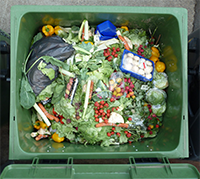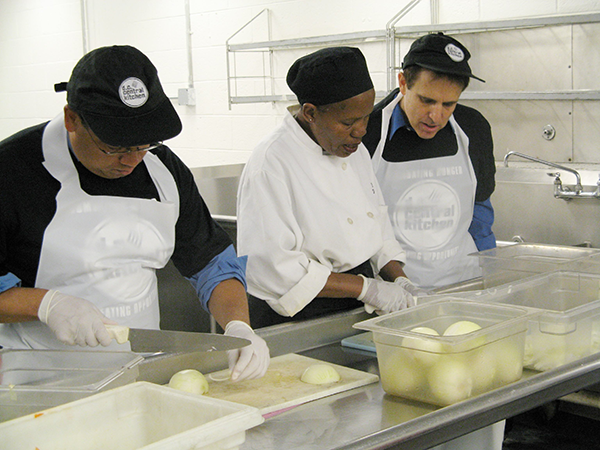Why Do Catholics Fast?
How can skipping a meal solve world hunger? Michael Jordan Laskey explores how fasting can be a powerful tool in working for justice.

For as long as I can remember, my mom has given up sweets for both Lent and Advent. As a kid, this struck me as bizarre, but I never asked her about it. I also never followed her example. Mom’s rigorous discipline seemed more than enough for one family. Plus, someone had to eat the leftover Halloween and Christmas candy.
The spiritual practice of fasting from food continued to befuddle me as I got older. Whether it’s sweets during Advent, meat on a Friday, or a meal on Ash Wednesday, what’s the point? Wouldn’t God want us to use the energy and commitment fasting requires to do something positive for the world instead? Because you don’t have to look hard to see that in so many ways, the world is not how God wants it to be.
 | One-third of the world’s food is wasted each year.Source: United Nations report |
Take hunger, for instance. The United Nations reports two disturbing statistics: Each year, while one-third of the world’s food is wasted, 3.1 million children under the age of five die from poor nutrition. That’s one every 10 seconds.
How could fasting from a particular food or skipping a meal do anything to respond to this crisis?
I was thinking about this again recently when Pope Francis called for a day of prayer and fasting for peace in Syria. The prayer part made sense to me, but I wasn’t sure why fasting for peace was important too. So I did a bit of Googling, and stumbled upon a short news story about a 2009 Lenten message written by an Argentinean Cardinal named Jorge Bergoglio.
Even though the article is just a few paragraphs, it sheds light on two main reasons why Pope Francis recommends fasting, and it helped me see fasting as an integral part of working for justice.
Fasting builds solidarity.
In his 2009 message, then-Cardinal Bergoglio wrote that fasting helps us overcome our indifference toward those who are homeless, hungry, or suffering in other ways. “We show no interest in their lives, their stories, their needs or their future,” he wrote. “How many times did their pleading looks make us look the other way and walk by? When we get used to something we also become indifferent.”
Fasting can wake us up from this indifference, Bergoglio wrote. Anyone who has fasted knows the repeating cycle: (1) a pang of hunger, (2) the immediate instinct to find something to eat, (3) a conscious decision to resist that instinct. Each conscious decision to continue fasting should trigger a reminder of what others face. Then fasting becomes a way to create what Cardinal Bergoglio called “solidarity with those who fast involuntarily.”
Fasting is not just giving stuff up.
The solidarity developed through fasting calls for positive action on behalf of those who are hungry. Cardinal Bergoglio paraphrased a passage from Isaiah 58 in his message, urging the faithful of Buenos Aires to fast as “God desires,” that is, “giving bread to the hungry, shelter to the homeless, clothing to the naked, and not turning our backs on our neighbor.”
Fasting is not meant to be done in place of outreach and work for justice. They are complementary. If we want those who are hungry to have enough, then those of us who have more than we need must consume less. We must sacrifice. We must fast, and then contribute our leftover resources to organizations that work for food security and economic development.

Volunteers at a soup kitchen in Washington, D.C.
“Today we need to fast by working so that others don’t have to fast,” Bergoglio wrote. “Today we can only practice fasting by taking of the pain and powerlessness of the millions who go hungry. Whoever does not fast for the poor cheats God. To fast is to love.”
So maybe this Advent I’ll join my mom in her action of love, and integrate fasting into my own small efforts to make the world closer to how God wants it to be.
Mike Jordan Laskey is the director of Life & Justice Ministries for the Diocese of Camden, NJ.
Activity: Fasting Cup

In this Intergenerational activity, adults and children will decorate a cup into which they’ll place 10 fasting ideas that they’ve written on paper strips. On each day of Lent, the family will choose one of the 10 ideas from the cup and each family member will make a special effort to put that idea into action. At the end of the day, they will put the strip back into the cup.
Download this free Fasting Cup Family Handout, which explains the activity, gives some information on fasting, and offers a template for the paper strips.

